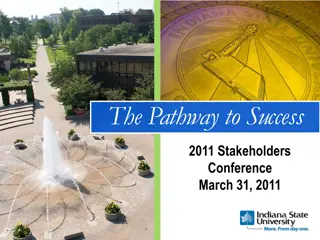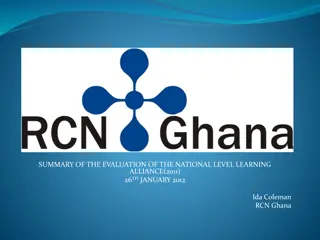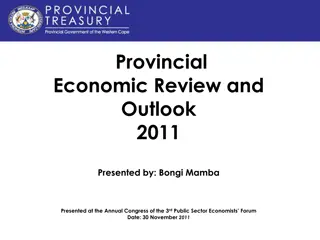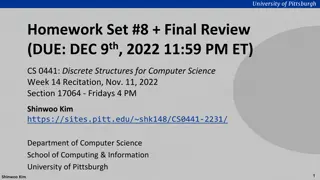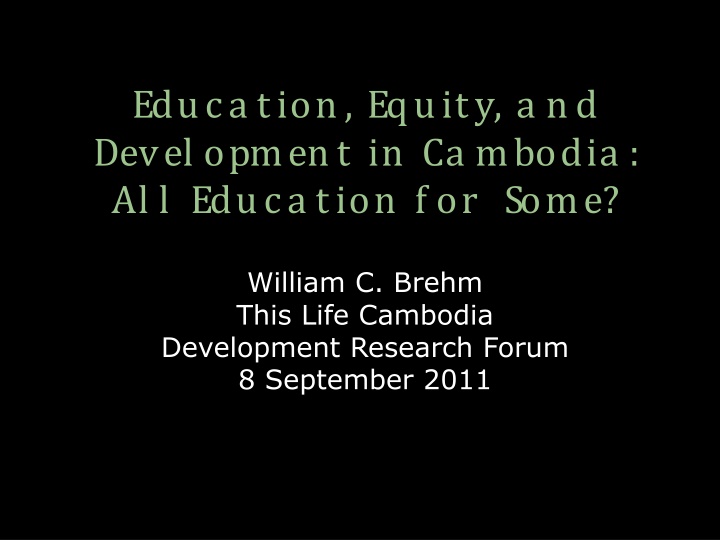
Equity and Development in Cambodian Education System
Explore the impact of the Education For All initiative on educational equity and development in Cambodia, focusing on privatization, private tutoring, and the quality gap in the public education system. The study questions if EFA has led to 'All Education for Some'.
Download Presentation

Please find below an Image/Link to download the presentation.
The content on the website is provided AS IS for your information and personal use only. It may not be sold, licensed, or shared on other websites without obtaining consent from the author. If you encounter any issues during the download, it is possible that the publisher has removed the file from their server.
You are allowed to download the files provided on this website for personal or commercial use, subject to the condition that they are used lawfully. All files are the property of their respective owners.
The content on the website is provided AS IS for your information and personal use only. It may not be sold, licensed, or shared on other websites without obtaining consent from the author.
E N D
Presentation Transcript
Educa tion, Equity, a nd Devel opment in Ca mbodia : Al l Educa tion f or Some? William C. Brehm This Life Cambodia Development Research Forum 8 September 2011
Ba ckgr ound The 1990s Education For All (EFA) initiative Liberalization policies by the international financial institutions: marketization and decentralization Increasing privatization of/in public education worldwide Private tutoring central feature of the privatization of education in Cambodia
Ba ckgr ound Literature on PT: expanding knowledge and interests for individuals (Bray, 2007) accumulating human capital for societies (Psacharopoulos, 1994), providing new strategies for coping with rapid geopolitical transitions for a variety of education stakeholders (Silova, 2009). Literature on Cambodia: informal fees (Bray & Bunly) tricks of the teacher (Dawson)
M a in Ar gument EFA has overemphasized access in lieu of quality in an underfunded public system of education, which has resulted in a quality gap in school. The quality gap has been filled by the exclusionary practice of private tutoring, but at the cost of undermining EFA goals. Thus, the push for EFA has actually resulted in All Education for Some.
Types of Pr iva te Tutor ing PT on national curriculum by public teachers during school year PT on national curriculum by public teachers during summer break Extra Special PT PT on subjects outside national curriculum Courses offered by low-fee private schools
Types of Pr iva te Tutor ing PT on national curriculum by public teachers during school year PT on national curriculum by public teachers during summer break Extra Special PT PT on subjects outside national curriculum Courses offered by low-fee private schools
Sa mpl e 6 Schools in 1 district 3 Semi-Urban - 2 primary, 1 LSS 3 Semi-Rural - 2 Primary, 1 LSS Education Stakeholders: Parents, teachers, students, and principals
M ethods Compared two UNESCO sponsored documents on compulsory education 28 classroom observations to find differences and similarities between government school (14) and private tutoring (14) 18 focus groups and interviews to unpack equity issues resulting from private tutoring
Key Findings History of compulsory education: same descriptions, different prescriptions The Quality Gap: Private tutoring is a continuation of government school All Education for Some: Students who don t go to private tutoring do not receive a full education and are stigmatized
Descr iption of Pr obl ems Problem 1955 2010 shortage of trained teachers not enough teachers Too few teachers Too few learning materials the school premises are inadequate limited education resources The Cambodian society [exhibits] irregular practices dependent on international aid time is spent on academic upgrading as opposed to teaching methodology pupil teacher ratio: 49.3:1 in 2007 Limitations of society a largely illiterate public economic backwardness endless repetition and the pupils were quite incapable of reading the words separately classes are large 60, 80, and even 100 pupils Economic troubles Limited pedagogy Class size too big
Pr escr iption to pr obl ems 1955: Compulsory schooling cannot be suddenly imposed; it must be prepared several years in advance it is the moral duty of the state, before making education compulsory, to offer the pupils proper schools with hygienic conditions, qualified teachers, and a suitable curriculum (p. 31). 2010: Inclusive Education for the hard to reach children. Quality is to be addressed by Child Friendly Schools, which states All children have access to schooling as the first dimension
Compul sor y Educa tion a nd f ees 1955: Entrance fees have never been asked for, textbooks have always been provided free of charge and many resident scholarships and various allowances have been awarded (p. 36). 2010: For many rural families that rely on agriculture for subsistence, education cost are the highest expense they face annually. Often they cannot afford to educate all of their children and choose only certain children to attend school (p. 28).
The Qua l ity ga p Private tutoring is perceived to complete the government school curriculum. Private tutoring is found to be an extension of government school in terms of content delivered and teaching methodology. One of the differences is in how students are practicing sample problems (exercises). Achievement differences between students who go to PT and those who do not (Brehm & Silova, Forthcoming)
Cur r icul um Too l ong We cannot finish the curriculum by only attending government school...this is why we need private tutoring. (9th grade student) There are too many lessons and too many students [in class]. (primary school teacher) If we want quality, we will not finish the curriculum. But if we want to finish the curriculum, students will not be qualified. (primary school teacher) Teachers held accountable for finishing curriculum. Results: cut examples from lessons ; summarize ; and rush.
Government School N= 14 % of classes observed (number of classes observed) Private Tutoring N=12 % of classes observed (number of classes observed) Activity High ability students work with low ability students High ability students help teach whole class Call of weak students to answer questions Students answer multiple choice questions Students answer questions at board Assigns homework Teacher presents new material Provides whole class instruction Students answer in chorus Teacher gives example to whole class 28.6 (4) 16.7 (2) 71.4 (10) 50 (6) 50 (7) 50 (6) 14.3 (2) 16.7 (2) 100 (14) 75 (9) 64.3 (9) 41.7 (5) 78.6 (11) 41.7 (5) 100 (14) 91.7 (11) 71.4 (10) 66.7 (8) 78.6 (11) 83.3 (10) Source: Brehm & Silova (Forthcoming)
Private Tutoring N=7 % of class time (minutes) Government School N=6 % of class time (minutes) Activity Observed Teacher gives lesson 30.26 (115) 29.40 (102) Students speak individually or as a whole class Classroom management (attendance, assign HW, collects money, etc.) 6.84 (26) 10.38 (36) 14.74 (56) 8.93 (31) Non-practice sub-total 51.84 (197) 48.71 (169) Student/teacher solves example problem at board Students solve example problem individually Students solve example problems in groups (3+ students) 28.69 (109) 26.80 (93) 17.63 (67) 7.20 (25) 0.00 (0) 17.29 (60) Students work in pairs 1.84 (7) 0.00 (0) Practice sub-total 48.16 (183) 51.29 (178) TOTAL 100 (380) 100 (347) 18
Aca demic Achievement Source: Brehm & Silova (Forthcoming)
The Stigma of Pr iva te Tutor ing Students who do not go to private tutoring are stigmatized Personal and intellectual differences Socio-economic status differences Family differences
Per sona l a nd Intel l ectua l Dif f er ences I want to attend private tutoring because it can make me become a smart student. If I attend private tutoring, I ll be clever and it makes my family happy. I want to attend private tutoring because I don t want other students to look down on me as I am not smart. I am very jealous of those who attend private tutoring.
Socio-economic sta tus dif f er ences Students who go to private tutoring are the students from fairly rich families. I feel sorry for [students who don t go to private tutoring] because they can t afford private tutoring. The students who go to private tutoring are the children from the families which do not have many members, are able to earn enough money to spend on food and education for their children.
Fa mil y dif f er ences Parents who send children to private tutoring care more. The students who go to private tutoring are from families who give enough time for their children to study and only have to help a little with housework. Adding, these families have a concrete house with tile roof...large land...and sell something in the village.
Concl usions The push for EFA has increased the number of students in school (this is good) But increased enrollments at a faster pace then the building of schools and training of teachers has resulted in the privatization of public education in the form of private tutoring Cost barriers to private tutoring prevent many students from receiving a full (quality) education
Concl usions Since private tutoring is perceived to provide all of the content that cannot be taught in government school, many students are left behind. This has real societal effects by stigmatizing those students who do not attend private tutoring. A system that was designed to be inclusive under the heading of Education for All has actually resulted in the exclusion of poor children. We therefore can describe this system as All Education for Some.









